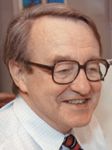- Acne
- Actinic Keratosis
- Aesthetics
- Alopecia
- Atopic Dermatitis
- Buy-and-Bill
- COVID-19
- Case-Based Roundtable
- Chronic Hand Eczema
- Chronic Spontaneous Urticaria
- Drug Watch
- Eczema
- General Dermatology
- Hidradenitis Suppurativa
- Melasma
- NP and PA
- Pediatric Dermatology
- Pigmentary Disorders
- Practice Management
- Precision Medicine and Biologics
- Prurigo Nodularis
- Psoriasis
- Psoriatic Arthritis
- Rare Disease
- Rosacea
- Skin Cancer
- Vitiligo
- Wound Care
Article
MSCs may repair tissue in diseased organs
New Orleans — Mesenchymal stem cells (MSCs), which originate in bone marrow, show promise as candidates for transplantation into diseased organs to repair damaged tissue, according to Darwin J. Prockop, M.D., director of the Tulane Center for Gene Therapy here.
New Orleans - Mesenchymal stem cells (MSCs), which originate in bone marrow, show promise as candidates for transplantation into diseased organs to repair damaged tissue, according to Darwin J. Prockop, M.D., director of the Tulane Center for Gene Therapy here.

"It's surprisingly difficult to devise markers for donor cells that are sensitive and remain stable after the cells engraft into different tissues," he tells Dermatology Times. "And it's been hard to define the kind and degree of tissue injury that promotes engraftment."
Mechanisms
In culture, studying the mechanisms MSCs use to regulate their own growth has been complicated by the subtle changes they undergo as they expand.
However, a co-culture system devised to study the ways MSCs repair injured cells and tissues has clarified activities that appear to have therapeutic implications.
"Under the right conditions, MSCs can be stimulated to multiply in vitro while retaining their ability to differentiate into many types of cells, such as those of bone, cartilage, tendon, muscle and fat," Dr. Prockop says. "This makes them attractive candidates for stem cell and gene therapy.
"Our findings also raise the interesting possibility that cells repair tissue injury in three ways: by transdifferentiation, wherein a cell takes on the characteristics of another cell type; by creating a milieu that promotes the regeneration of endogenous cells; and perhaps by cell fusion."
When MSCs were added to pulmonary epithelial cells in culture, some of the MSCs transdifferentiated into epithelial cells, a direct demonstration of the response of MSCs to cell injury.
First, the researchers heat-shocked normal human epithelial cells. Many became necrotic and apoptotic, disrupting the epithelial monolayer. After MSCs were added to the heat-shocked cells, some MSCs entered the monolayer, where they assumed the broad, flat morphology of epithelial cells and began to express many typically epithelial proteins. The heat-shocked epithelial cells release signals that attracts MSCs. The co-culture system could be used to identify these signals, Dr. Prockop explains.
Repeated cycle
The group next found that when MSCs were cultured at very low densities, they repeatedly displayed a cycle consisting of a lag phase, an intense and exponential growth phase, and a stationary phase.
Adding conditioned medium from stationary cultures to freshly plated cultures during the growth phase caused MSCs to proliferate at a very rapid rate. The active component in the medium proved to be Dickkopf-1 (Dkk-1), a protein MSCs synthesize and secrete early in the growth phase. Adding recombinant Dkk-1 to cultured MSCs enhance their proliferation, and adding antibodies to Dkk-1 decreased it.
Experiments with osteosarcoma cells yielded similar results.
These cells also remained in a stationary phase until they synthesized enough Dkk-1 to stimulate their own growth.
"This raises the possibility that antagonists of Dkk-1 may be useful to limit the growth of some malignancies," Dr. Prockop says.
During the stationary phase of the cell cycle, MSC cells expressed Wnt5a, a substance that enhances blood cell reproduction. This may explain why MSCs serve as effective feeder layers for hematopoietic stem cells.
Animal model
In animals, MSC engraftment has produced promising results in Parkinsonism, spinal cord injury, stroke, myelin deficiency, cardiac disorder and lung diseases, Dr. Prockop says.
Newsletter
Like what you’re reading? Subscribe to Dermatology Times for weekly updates on therapies, innovations, and real-world practice tips.











